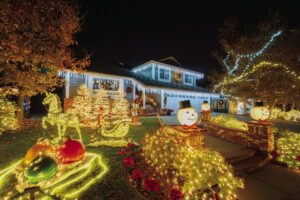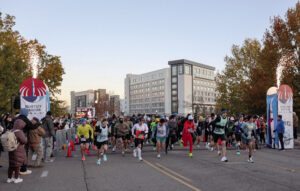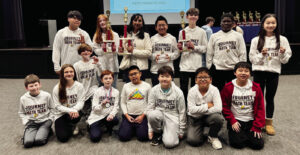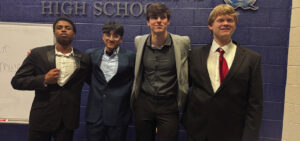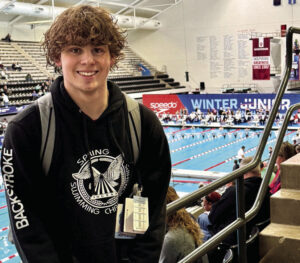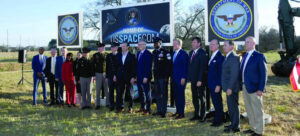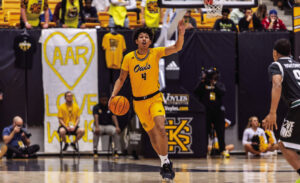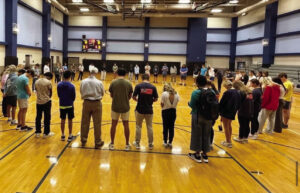Eighty youngsters imagine, create at Camp Invention
At Camp Invention, a tower of ‘upcycled’ materials dwarfs campers, who learned about center of gravity in the Amazing Atlas class. (CONTRIBUTED)
MADISON – Traveling the Earth from pole to pole, children at Camp Invention mastered scientific concepts, ranging from geo-cache navigation to volcano formation.
Eighty students in grades 1-6 gathered at West Madison Elementary School, camp director Wendy Tibbs said. Sixty attended in 2012. Two seventh-graders participated as “counselors in training,” a new provision.
Students brought numerous recyclable materials, like empty cereal boxes and leftover crafting items, Tibbs said. Students had to view “those items through a new and creative lens” like a paper-towel tube becoming cylinder support for a building.
Camp instructors from Madison City Schools were Tibbs, Elizabeth Bero, Debbie Medeiros and Debra Weaver, along with Melissa Snider from Huntsville City Schools.
Students rotated through four different classes each day.
A perennial camp favorite is take-apart class, which featured a “duck launch. Students made an apparatus that could launch a rubber duckie across a span of distance,” Tibbs said. The exercise simulated different “eco-hardships encountered by wildlife.”
In the “Amazing Atlas” class, students traveled “to five extreme natural wonders of the world by navigating a world map using cardinal directions and lines of latitude/longitude,” Weaver said.
For the Sahara Desert, they designed an insulated container that protected scientific supplies. In the Himalayas, campers “designed a contraption to retrieve their supply backpack that fell down a steep ledge,” Weaver said.
Weaver’s classes also enjoyed spelunking through Mexico’s “Cave of Crystals” and exploring the Dead Sea where they devised an imaginary animal adapted to extreme salty conditions. While “ice-digging in the Antarctic, they designed a special tool to bore through an ice sampling to extract objects” revealing life from past milleniums, Weaver said.
In Bero’s “Ecoverse” (ecology plus universe) class, campers studied navigation by stars and “built a stellar navigator, a map of the northern sky with a motor to turn it.”
Examining wave action and echo location, campers designed a tool to “rescue a bottle from the ‘ocean,'” Bero said. They studied earthquakes, plate tectonics and seismometers and designed protective gear for a vulcanologist.




